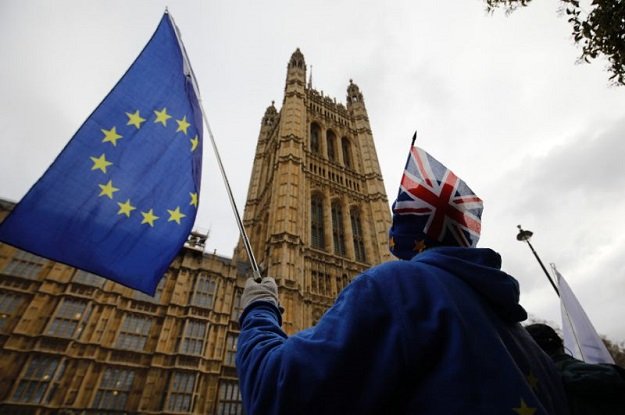
With less than two months until Britain is due by law to leave the EU, lawmakers voted on January 29 to demand Prime Minister Theresa May seek changes to Britain’s exit treaty, which the EU says cannot be renegotiated.
They also voted to express opposition to a no-deal exit from the EU but rejected a proposal that would delay Brexit if necessary to avert crashing out without a deal.
Some analysts saw these events as raising risks of a no-deal Brexit, though they still assigned a low probability to this outcome. However, belief has grown that the government will have to extend the March 29 deadline for its EU exit.
Brexit will open new opportunities for trade between Pakistan, UK: FM Qureshi
Sterling was trading around $1.30 on Tuesday, up 1.8 percent this year but off 2-1/2-month highs hit in the run-up to the Jan 29 vote.
Below are the views from a selection of investment banks and asset managers:
Amundi Asset Management
Views no-deal probability at roughly 20 percent but estimates a 50 percent chance an agreement is ratified by March 29. It also sees a roughly 30 percent probability of Brexit being postponed by several months, citing the likelihood of a new referendum or new elections or even a withdrawal of Article 50 by Britain.
Colombia Threadneedle Investments
Reckons there is a 60 percent chance of an orderly exit, with the remaining 40 percent split between an Article 50 extension and a no-deal scenario.
UK can unilaterally stop Brexit rules top EU court
Goldman Sachs
Raised its estimated probability of no-deal Brexit to 15 percent from 10 percent after the parliament vote. The bank also cut the probability of Brexit not happening at all to 35 percent from 40 percent while leaving chances of a delayed Brexit at 50 percent.
Deutsche Bank
Raised its estimate of the probability of a no-deal Brexit to 15 percent from 5 percent and recommended taking profit on a long sterling position. However the bank also raised to 50 percent its prediction of the chance of a last-minute ratification of May’s deal, versus its prior view of 30 percent.
It cut the probability of a second referendum to 5 percent from 15 percent.
BNP Paribas
Kept unchanged its view of a 20 percent chance of a no-deal Brexit and a 35 percent chance of a second Brexit referendum. Advised staying long sterling, noting that parliament had merely “kicked the can down the road”. It sees a delay to the March 29 deadline as “inevitable”.
Standard Chartered
Maintains its view of a 20 percent chance of no-deal Brexit but sees rising chances that Brexit will be delayed.
UK faces ‘more division’ if Brexit deal fails: May
Berenberg
Reckons risk of a hard Brexit “by accident” has risen to 30 percent from 20 percent. The bank also now sees a 20 percent chance of no Brexit, down from around 25 percent earlier. It said that in any outcome involving a deal, an extension of the deadline could be necessary.
ING Bank
Sees the probability at 20 percent, same as previously, noting lawmakers’ clear appetite for a deal.
MUFG
Assigns 10-15 percent chance of a no-deal Brexit and has not changed that estimate. Its view is that the parliament vote was a setback rather than the endgame, with lawmakers likely to agree a deal. The bank reckons however that the deadline for leaving will have to be extended.
Nordea
Says that following the parliament vote, likelihood of no-deal Brexit would be 25-30 percent compared to 20 percent earlier. Sees a delay to the deadline as “a certainty”.
Oanda
Sees no-deal risk at 10 percent at most and has not changed that probability, predicting lawmakers will opt to approve a deal rather than risk the damage caused by a disorderly Brexit.







1732354127-0/Untitled-design-(3)1732354127-0-270x192.webp)


1732344836-0/BeFunk_§_]__-(37)1732344836-0.jpg)






COMMENTS
Comments are moderated and generally will be posted if they are on-topic and not abusive.
For more information, please see our Comments FAQ